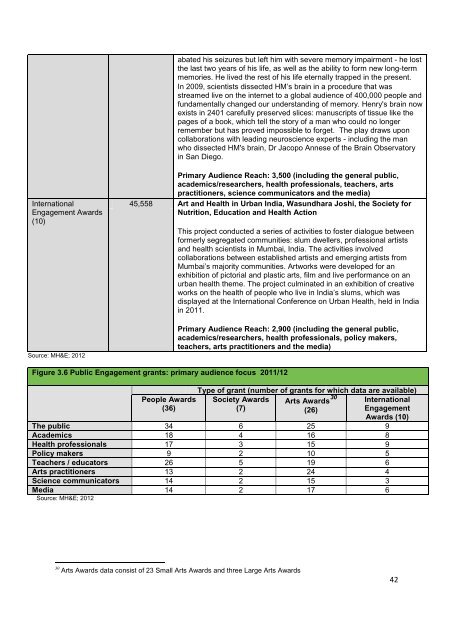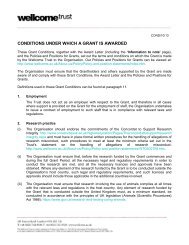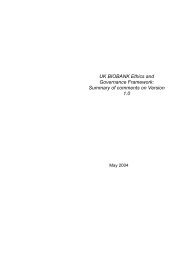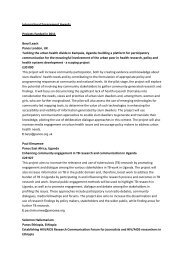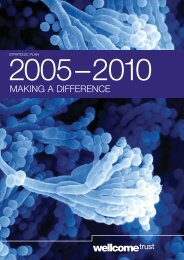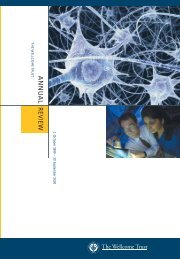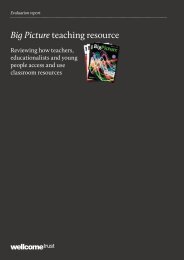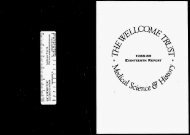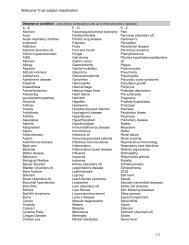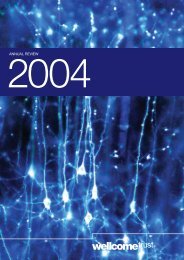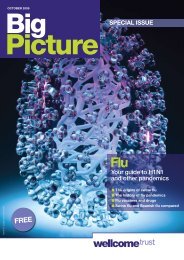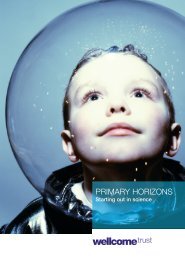Assessment Framework Report vol. 1, 2011/12 - Wellcome Trust
Assessment Framework Report vol. 1, 2011/12 - Wellcome Trust
Assessment Framework Report vol. 1, 2011/12 - Wellcome Trust
Create successful ePaper yourself
Turn your PDF publications into a flip-book with our unique Google optimized e-Paper software.
abated his seizures but left him with severe memory impairment - he lost<br />
the last two years of his life, as well as the ability to form new long-term<br />
memories. He lived the rest of his life eternally trapped in the present.<br />
In 2009, scientists dissected HM’s brain in a procedure that was<br />
streamed live on the internet to a global audience of 400,000 people and<br />
fundamentally changed our understanding of memory. Henry's brain now<br />
exists in 2401 carefully preserved slices: manuscripts of tissue like the<br />
pages of a book, which tell the story of a man who could no longer<br />
remember but has proved impossible to forget. The play draws upon<br />
collaborations with leading neuroscience experts - including the man<br />
who dissected HM's brain, Dr Jacopo Annese of the Brain Observatory<br />
in San Diego.<br />
International<br />
Engagement Awards<br />
(10)<br />
Source: MH&E; 20<strong>12</strong><br />
Primary Audience Reach: 3,500 (including the general public,<br />
academics/researchers, health professionals, teachers, arts<br />
practitioners, science communicators and the media)<br />
45,558 Art and Health in Urban India, Wasundhara Joshi, the Society for<br />
Nutrition, Education and Health Action<br />
This project conducted a series of activities to foster dialogue between<br />
formerly segregated communities: slum dwellers, professional artists<br />
and health scientists in Mumbai, India. The activities in<strong>vol</strong>ved<br />
collaborations between established artists and emerging artists from<br />
Mumbai’s majority communities. Artworks were developed for an<br />
exhibition of pictorial and plastic arts, film and live performance on an<br />
urban health theme. The project culminated in an exhibition of creative<br />
works on the health of people who live in India’s slums, which was<br />
displayed at the International Conference on Urban Health, held in India<br />
in <strong>2011</strong>.<br />
Primary Audience Reach: 2,900 (including the general public,<br />
academics/researchers, health professionals, policy makers,<br />
teachers, arts practitioners and the media)<br />
Figure 3.6 Public Engagement grants: primary audience focus <strong>2011</strong>/<strong>12</strong><br />
People Awards<br />
(36)<br />
Type of grant (number of grants for which data are available)<br />
Society Awards Arts Awards 30<br />
(7)<br />
(26)<br />
International<br />
Engagement<br />
Awards (10)<br />
The public 34 6 25 9<br />
Academics 18 4 16 8<br />
Health professionals 17 3 15 9<br />
Policy makers 9 2 10 5<br />
Teachers / educators 26 5 19 6<br />
Arts practitioners 13 2 24 4<br />
Science communicators 14 2 15 3<br />
Media 14 2 17 6<br />
Source: MH&E; 20<strong>12</strong><br />
30 Arts Awards data consist of 23 Small Arts Awards and three Large Arts Awards<br />
42


